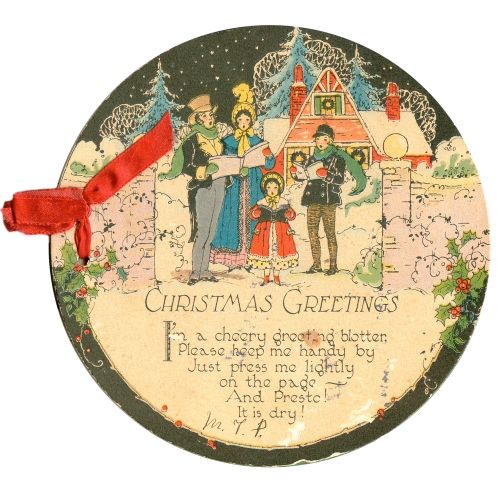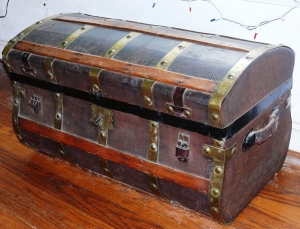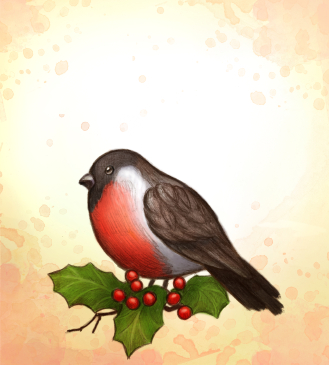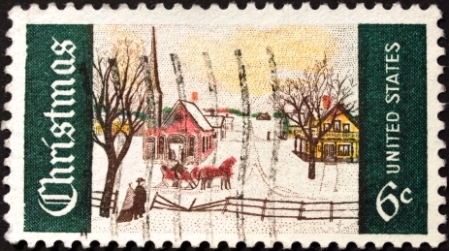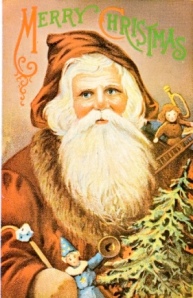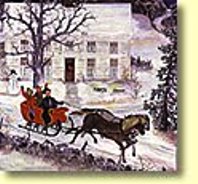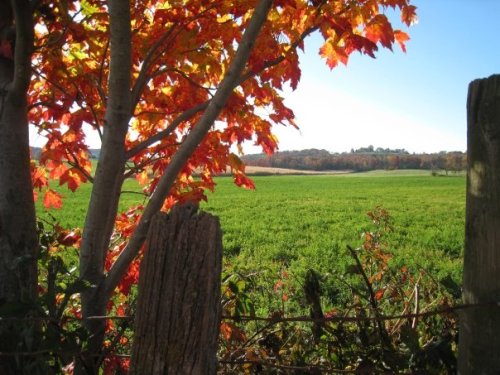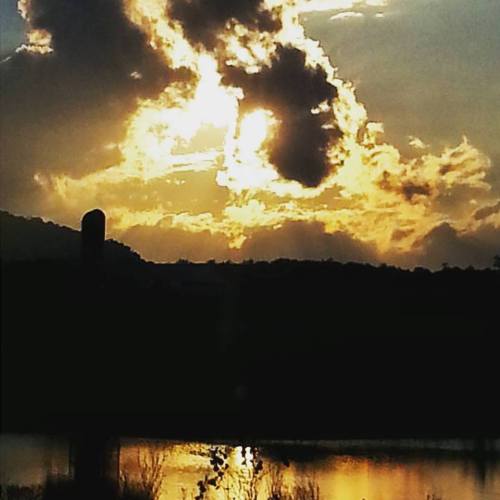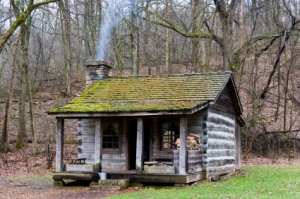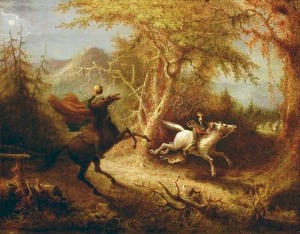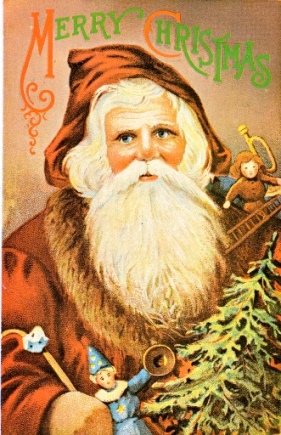 Several years ago, my mother came across an antiquated box of family Christmas cards reaching back into the early 20th century. For those of you who enjoyed the British television series, Downton Abbey, this would encompass the Edwardian era before WWI (Season One). Other cards were sent during the Great War and soon after its conclusion. Some cards may extend even further back in time. This window into the past makes me very nostalgic. Reading the messages included in these holiday greetings transport me back to an age forgotten by many, but shouldn’t be.
Several years ago, my mother came across an antiquated box of family Christmas cards reaching back into the early 20th century. For those of you who enjoyed the British television series, Downton Abbey, this would encompass the Edwardian era before WWI (Season One). Other cards were sent during the Great War and soon after its conclusion. Some cards may extend even further back in time. This window into the past makes me very nostalgic. Reading the messages included in these holiday greetings transport me back to an age forgotten by many, but shouldn’t be.
I’ve often heard about these ancestors, fine people, and even remember some of them from my childhood. Others lived far later into my life, but began theirs when America was quite a different place. Some cards from family friends are people not known to me, but glimpsed through their greetings. These gentle folk wouldn’t be trampling each other at Walmart on Black Friday. There is a graciousness in this era, despite the World Wars, that we are losing. Hearken back with me to earlier days.
 These cards Mom scanned are among the most colorful. Because the cost of ink was high in that era, many only had small colored images or were in black and white. To receive a truly colorful greeting would have been a real treat. I’m grateful my family saved these images and messages from a simpler, more refined time. Many of these folks lived in Virginia. Our roots in the Old Dominion go back several hundred years.
These cards Mom scanned are among the most colorful. Because the cost of ink was high in that era, many only had small colored images or were in black and white. To receive a truly colorful greeting would have been a real treat. I’m grateful my family saved these images and messages from a simpler, more refined time. Many of these folks lived in Virginia. Our roots in the Old Dominion go back several hundred years.
Because of my fascination with these bygone days, I’ve written two Christmas romance novellas: A Warrior for Christmas (set in Colonial America) and Somewhere the Bells Ring (set in the old Virginia family homeplace in the 1960’s with flashbacks to 1918). Both eBooks are on sale at Amazon and Barnes & Noble. A Warrior for Christmas is also out in audio.
“Christmas is the gentlest, loveliest festival of the revolving year – and yet, for all that, when it speaks, its voice has strong authority.” ~W.J. Cameron
“Our hearts grow tender with childhood memories and love of kindred, and we are better throughout the year for having, in spirit, become a child again at Christmas-time.” ~Laura Ingalls Wilder
“This is the message of Christmas: We are never alone.” ~Taylor Caldwell
“I will honor Christmas in my heart, and try to keep it all the year.” ~Charles Dickens
“Christmas is the season for kindling the fire of hospitality in the hall, the genial flame of charity in the heart.” ~Washington Irving
“Christmas is the day that holds all time together.” ~Alexander Smith
“A Christmas candle is a lovely thing;
It makes no noise at all,
But softly gives itself away.” ~Eva Logue
It makes no noise at all,
But softly gives itself away.” ~Eva Logue
***For those of you interested in old trunks. The one containing these cards and other family memorabilia is pictured below. We think it dates from about 1870, but are not certain. If you have a better guess let me know.


